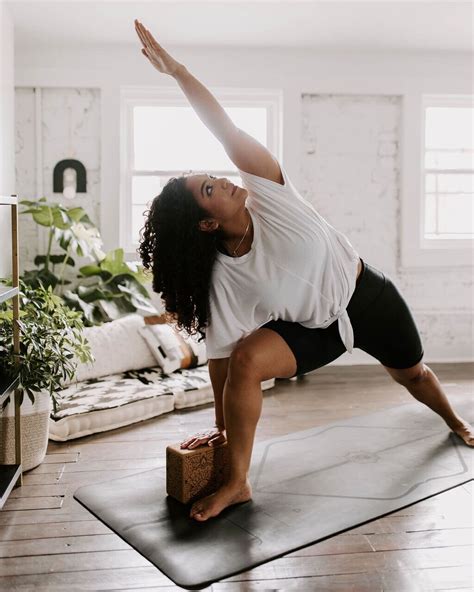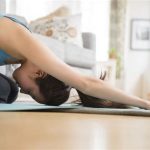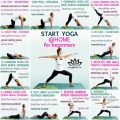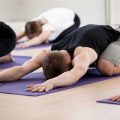How to Choose Your First Yoga Class: 7 Essential Tips for Beginners
Starting yoga for the first time can be both exciting and intimidating. With countless types of yoga styles and class options available, it’s important to find the right fit for your goals, fitness level, and preferences. This guide will help you make informed decisions and find a class that aligns with your needs, ensuring a positive and fulfilling first experience with yoga. Whether you’re aiming to improve flexibility, reduce stress, or enhance overall wellness, these seven tips will guide you through the selection process.
1. Define Your Goals for Yoga Practice
Before choosing a yoga class, it’s essential to reflect on why you’re interested in yoga in the first place. Different yoga styles serve different purposes, so understanding your personal goals is crucial in selecting the right class. Ask yourself these key questions:
- Are you looking for physical fitness, flexibility, or strength training?
- Is your primary focus stress relief or mindfulness?
- Do you want to deepen your spiritual practice, or are you just curious about yoga?
For example, if your goal is relaxation, you might enjoy a Restorative or Yin Yoga class. If you’re looking to increase flexibility or strength, a more active class like Vinyasa or Ashtanga might be more suitable.
2. Research Different Types of Yoga
Understanding the various types of yoga will help you find the best match for your preferences and goals. Each type offers different levels of intensity, flow, and focus:
- Hatha Yoga: A slower-paced style focused on holding poses, suitable for beginners.
- Vinyasa Yoga: Known for its fluid, dynamic movement that links breath with motion, offering a moderate to high intensity.
- Yin Yoga: Targets deep connective tissues with long-held poses, ideal for improving flexibility and calming the mind.
- Ashtanga Yoga: A structured sequence of poses practiced in a specific order, best for those looking for physical challenge and discipline.
- Bikram Yoga: Also known as “hot yoga,” practiced in a heated room to promote sweating and detoxification.
- Kundalini Yoga: Focuses on spiritual energy through a combination of breathwork, movement, and chanting.
- Restorative Yoga: Involves deep relaxation, using props like blankets and blocks to support passive stretching.
As you can see, yoga is not a one-size-fits-all practice. Taking the time to familiarize yourself with these options will help you choose a class that aligns with your goals.
3. Start with Beginner-Friendly Classes
While it might be tempting to jump into a high-intensity class, it’s important to find a yoga class tailored to beginners. These classes often provide extra guidance on foundational poses and breathing techniques, which are key to building a solid base for your practice. Some terms to look for in class descriptions include:
- Beginner Yoga: A class specifically designed for those new to yoga.
- Hatha Yoga: Generally slower and focused on basic poses, making it suitable for beginners.
- Intro to Vinyasa: A slower-paced introduction to the more dynamic flow of Vinyasa yoga.
Avoid jumping into advanced classes too quickly, as they may assume a level of knowledge and experience you haven’t developed yet. Starting with beginner classes helps to build confidence and prevent injury.
4. Consider the Class Environment and Teacher’s Style
The atmosphere of the class and the teaching style can make a huge difference in your experience. Take time to research the instructors at your local studio or gym, read reviews, or ask for recommendations. Look for a teacher who creates a welcoming and supportive environment, especially if you’re nervous about your first class.
You might want to ask yourself:
- Does the teacher emphasize alignment and safety, which is crucial for beginners?
- Are they approachable and willing to offer modifications for different skill levels?
- Is their teaching style more strict or relaxed?
- Do they encourage self-care and listening to your body’s signals?
Choosing a teacher who makes you feel comfortable and supported will help you build a positive foundation in your yoga practice.
5. Assess the Studio’s Accessibility and Schedule
When selecting your first yoga class, practical factors like location, class times, and the studio’s environment are just as important as the style of yoga itself. Consider:
- Location: Is the studio easily accessible from your home or work?
- Class times: Do the available class times fit your schedule and routine?
- Studio amenities: Does the studio offer amenities such as mats, towels, or changing rooms?
- Class size: Do you prefer a larger group for a communal energy or a smaller class for more individualized attention?
Also, make sure the studio is beginner-friendly, offering a calm and welcoming environment rather than one that feels competitive or intimidating.
6. Try an Online Class Before Attending In-Person
If you’re still unsure about which type of yoga is right for you, trying an online yoga class can be a low-pressure way to explore different styles. Many platforms offer free beginner classes where you can practice at your own pace and comfort level. This allows you to experiment with various styles and find out what resonates with you before committing to a studio or specific teacher.
Here are some great beginner-friendly online resources:
- Yoga with Adriene: A popular YouTube channel offering a wide variety of free beginner classes.
- Glo: A subscription service that offers diverse styles, from Vinyasa to Restorative yoga.
- Daily Burn: Another platform with a variety of yoga classes suited for different experience levels.
7. Be Patient and Embrace the Learning Process
Starting yoga is a personal journey that involves both physical and mental growth. It’s important to remember that every body is different, and progress takes time. Avoid comparing yourself to others in class or pushing yourself beyond what feels comfortable. Yoga is about listening to your body, and with patience and consistency, you will begin to see the benefits unfold.
Here are some tips for managing expectations:
- Celebrate small improvements, like better flexibility or longer hold times in poses.
- Focus on your breath as a guide for your practice rather than solely aiming for physical perfection.
- Remember that yoga is as much about mental clarity as it is physical fitness.
- Acknowledge that everyone in the class was once a beginner, too.
Yoga is an ongoing learning process that extends beyond physical poses, and each practice will bring you closer to your goals of fitness, mindfulness, or relaxation.
Case Study: First-Time Yoga Experiences
To provide real-world examples of beginners finding success, consider these case studies of individuals who navigated their first yoga experiences with these tips:
| Individual | Goal | Yoga Style Chosen | Results |
|---|---|---|---|
| John | Improve flexibility for martial arts | Yin Yoga | Increased flexibility and enhanced range of motion |
| Lisa | Reduce anxiety and stress | Restorative Yoga | Felt more relaxed and able to manage daily stress better |
| Mark | Build strength and balance | Vinyasa Yoga | Improved muscle tone and better coordination |
Limitations and Future Research
While this guide offers comprehensive advice on choosing a yoga class, individual experiences may vary based on personal fitness levels, preferences, and goals. Future research could further investigate the psychological benefits of different yoga styles, as well as how different demographic groups, such as older adults or athletes, might adapt to yoga in unique ways.
Expert Commentary
As a long-time yoga practitioner and teacher, I believe that the first step toward a rewarding yoga journey is taking the time to find a class that truly aligns with your goals and needs. While it’s important to challenge yourself, the most significant growth in yoga comes from consistency, self-compassion, and embracing the learning process. With the diverse options available, yoga offers something for everyone, and the right class can transform your body, mind, and overall well-being.








